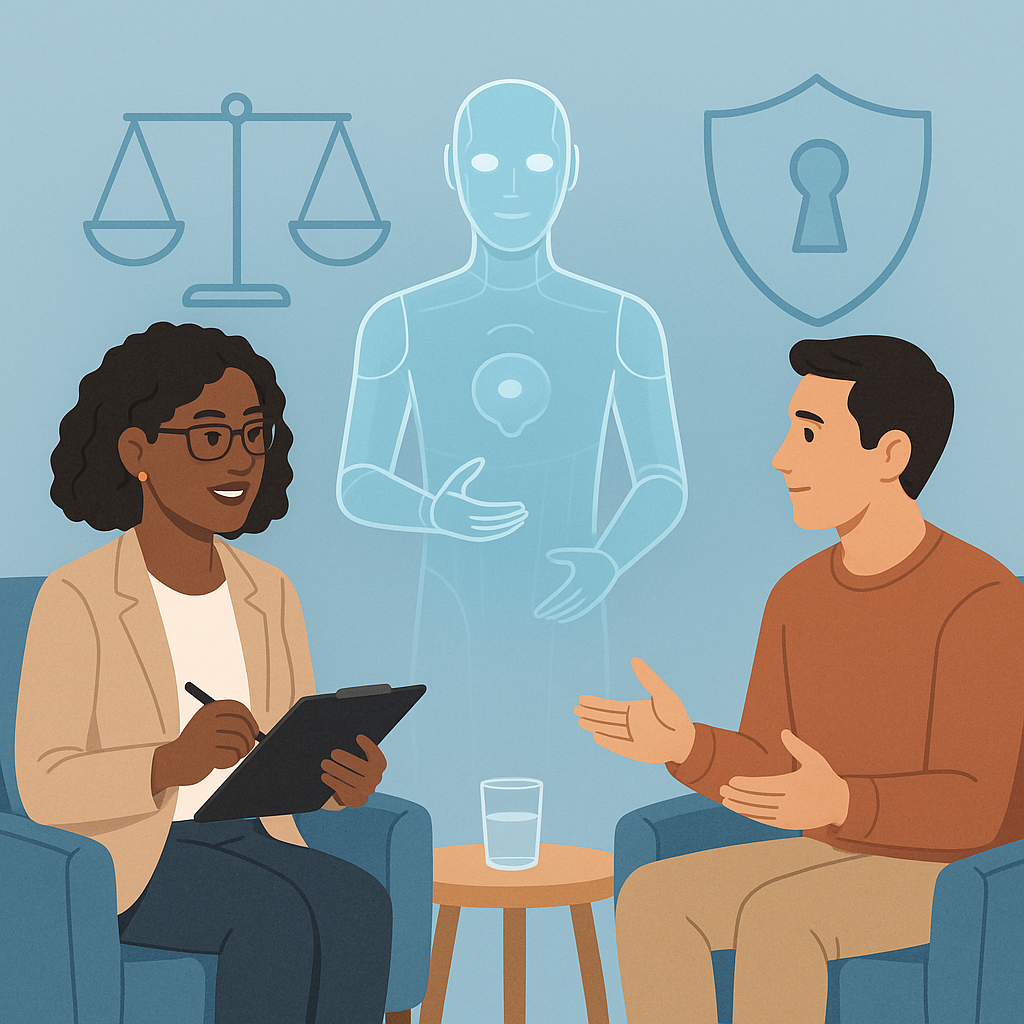
Artificial Intelligence (AI) is transforming the way we live—and therapy is no exception. From mental health applications and speech-language tools to diagnostic aids and virtual assistants, AI is beginning to play a significant role in how therapists assess and support individuals.
While these innovations bring great potential, they also raise an important question: How can we integrate AI into therapy responsibly, without compromising ethical standards or human connection?
What AI Brings to Therapy
AI offers valuable support across many therapeutic settings. It can:
• Help manage high caseloads
• Track client progress over time
• Generate tailored home-practice materials
• Provide 24/7 access to therapeutic support through chatbots or apps
For example, speech-language pathologists might use AI to monitor articulation improvement, while mental health professionals might employ it for guided self-help exercises between sessions. These tools can increase access, enhance personalization, and make services more efficient.
But the promise of AI must be balanced with careful consideration of its limitations—especially regarding trust, ethics, and clinical decision-making.
Data Privacy and Informed Consent
Therapy involves the sharing of deeply personal information. When AI tools are introduced, they often collect and process sensitive data—ranging from language samples and therapy notes to emotional or behavioral indicators.
This raises several questions:
Where is this data stored? Who can access it? Is it secure?
Therapists must ensure that any AI-based tools comply with data protection laws such as HIPAA (in the U.S.), GDPR (in Europe), or other local regulations. However, legality isn’t enough. Clients should receive clear explanations about how their information is collected, stored, and used. Informed consent should go beyond paperwork—it requires transparent and ongoing conversations.
AI as a Support, Not a Substitute
AI can process patterns, suggest interventions, and provide new insights—but it cannot think or feel. It lacks the human qualities essential to therapy: empathy, ethical judgment, cultural sensitivity, and the ability to understand complex social contexts.
While AI can be a helpful aid, it must never replace the therapist. Professionals must remain fully responsible for interpreting AI output, making decisions, and ensuring that care remains client-centered and ethically sound.
Bias, Fairness, and Cultural Sensitivity
AI is only as reliable as the data it’s trained on. If the training data lacks diversity, the AI may produce biased or inaccurate results.
For instance, a speech assessment tool trained primarily on monolingual children from a single background may fail to accommodate multilingual speakers or neurodivergent individuals. Similarly, mental health tools built around Western norms may be less effective—or even inappropriate—in other cultural contexts.
Therapists must ask: Who was this tool designed for? Is it valid and reliable across different populations? Ethical practice means advocating for inclusivity and demanding that AI tools reflect the diverse needs of real clients.
Digital Access and Equity
Ethical therapy must consider not only how AI is used, but who has access to it. Not all clients have internet access, digital devices, or the technological literacy needed to engage with AI tools.
Relying too heavily on digital interventions risks excluding those from underserved or rural communities, older adults, and families with limited resources. Therapists must consider these gaps and strive to ensure that technology does not widen disparities in care.
Professional Responsibility and Oversight
Therapists are accountable for every tool they use—digital or otherwise. Even when AI tools are widely accepted or marketed as effective, professionals must ask:
• Is this tool evidence-based?
• Is it appropriate for this client?
• Am I monitoring its effects responsibly?
Ethical standards set by professional associations like ASHA or APA need to evolve alongside technological change. In the meantime, therapists must take initiative to educate themselves and evaluate AI tools critically.
Continual Reflection and Collaboration
AI in therapy is still in its early stages. As the technology develops, therapists must stay informed, remain adaptable, and actively participate in shaping its future. This includes collaborating with developers, researchers, and policymakers to ensure that ethical values are embedded into the design of digital tools.
Clinical insight, client feedback, and ongoing reflection are essential for aligning innovation with care.
Conclusion: People First, Technology Second
AI can be a powerful ally in therapy—saving time, improving access, and even enriching our understanding of client needs. But the heart of therapy remains unchanged: it’s about people, relationships, and trust.
As we integrate AI into therapeutic practice, the real question is not just what can AI do—but how can we use it responsibly? When guided by ethics, empathy, and professional judgment, AI can enhance therapy without replacing the very human connection that makes it effective.
A Glimpse Ahead: The EU AI Act 2024
As the integration of AI accelerates across all sectors, Europe has taken a landmark step with the AI Act 2024—the first major regulatory framework aimed at governing AI use with a strong emphasis on ethics, transparency, and human rights.
This regulation classifies AI systems by risk level (from minimal to unacceptable) and places strict requirements on high-risk applications, such as those used in healthcare and therapy. Tools used in therapeutic contexts may need to meet higher standards for data handling, explainability, human oversight, and bias prevention.
For therapists using or planning to adopt AI tools within the EU, the AI Act underscores the need to stay informed, ensure compliance, and prioritize ethical design and informed use.
We’ll take a closer look at the implications of the AI Act 2024—and what it means for therapy—in our next issue.
